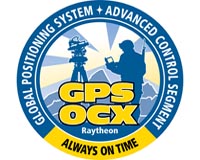 |
Portland Or (SPX) Oct 06, 2010 Broadcom Corporation has announced that its single-chip global positioning system (GPS) solution for mobile devices supports the new Quasi-Zenith Satellite System (QZSS) launched by Japan earlier this month. The BCM4751 solution has built-in support for QZSS and also supports additional satellite constellations including the Satellite Based Augmentation System (SBAS), making as many as nine additional satellites available for use in navigation. This built-in support will result in several GPS performance benefits, including improved urban canyon navigation in major cities such as Tokyo and availability of position fixes in more areas than competitive solutions. The foundation of the Japanese Quasi-Zenith Satellite System has just been established with the launch of a new navigation satellite named Michibiki. This is the first of three satellites in this new constellation. The QZSS satellites are meant to provide refined navigation capabilities over existing systems. The QZSS satellites require a new set of pseudo random number (PRN) codes, support for which is already built into the BCM4751. Broadcom is working closely with the Japan Aerospace Exploration Agency (JAXA) to test reception of live QZSS signals and codes as they become available using the BCM4751. The Broadcom BCM4751 is a single-chip GPS receiver used for tracking and navigation, primarily in mobile devices. Its massively parallel, hardware correlator architecture provides faster signal searches, accurate real-time navigation, improved tracking sensitivity and very low average power consumption. The sensitivity and navigation performance of the BCM4751 continue to set the standard for the industry. Key features of the Broadcom BCM4751 GPS receiver include: + 65 nanometer CMOS design featuring a highly integrated radio frequency (RF) and baseband processor with extremely low power consumption. + The smallest complete PCB footprint: 30 mm(2) including band-pass filter, TCXO and passives. + High sensitivity operation. + Increased satellite availability: supports GPS, SBAS and QZSS satellites at L1 frequency band. + Integrated power management allowing direct connection to the battery. + Available in both wafer level ball grid array (WLBGA) and fine pitch ball grid array (FPBGA) packages.
Share This Article With Planet Earth
Related Links the missing link GPS Applications, Technology and Suppliers
 Raytheon Completes GPS OCX Integrated Baseline Review
Raytheon Completes GPS OCX Integrated Baseline ReviewAurora CO (SPX) Oct 01, 2010 Raytheon team developing the next-generation Global Positioning System (GPS) Advanced Control Segment (OCX) successfully completed on schedule an integrated baseline review with the U.S. Air Force. "Successful completion of the integrated baseline review is the first step in the team's commitment to delivering the required capability on cost and on schedule," said Bob Canty, Raytheon vice ... read more |
|
| The content herein, unless otherwise known to be public domain, are Copyright 1995-2010 - SpaceDaily. AFP and UPI Wire Stories are copyright Agence France-Presse and United Press International. ESA Portal Reports are copyright European Space Agency. All NASA sourced material is public domain. Additional copyrights may apply in whole or part to other bona fide parties. Advertising does not imply endorsement,agreement or approval of any opinions, statements or information provided by SpaceDaily on any Web page published or hosted by SpaceDaily. Privacy Statement |